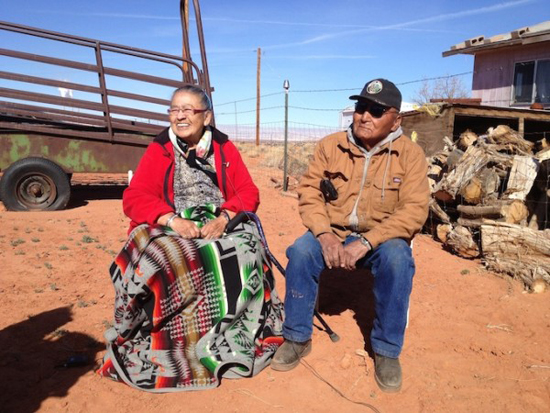Author: Kim Kalliber
Smith Island restoration project a huge win for water quality
Senator McCoy champions conservation project
Source: The Washington Wildlife and Recreation Coalition
People and salmon alike will benefit from a new project to protect Smith Island outside of Everett.
The Recreation and Conservation Office recently announced that the restoration of the Smith Island estuary would receive a grant from the Washington Wildlife and Recreation Program. This estuary is part of the Snohomish River system, which provides the second largest volume of freshwater entering Puget Sound from a single source.
“This project will provide immense benefits, restoring salmon habitat and protecting our water quality for the next generation,” said Senator John McCoy (D-Tulalip) . “The WWRP is a critical investment in our outdoors that is essential to preserving our quality of life.”
This single project represents nearly 5% of the entire Puget Sound Ecosystem Recovery estuary restoration target for 2020.
The local match combined with more than $15 million in federal and state grants from the Salmon Recovery Funding Board, the Recreation and Conservation Funding Board, and RCO brings the total funding amount to $16,001,958.
In addition to protecting water quality, the restoration of the Smith Island estuary will also provide new recreation access. Visitors will be able to witness wildlife in a rich tidal marsh habitat minutes from Everett’s urban core.
“Two thirds of WWRP projects protect or restore Puget Sound. This level of success would not be possible without dedicated legislators like Senator McCoy,” said Joanna Grist, executive director of the Washington Wildlife and Recreation Coalition. “Smith Island is a prime example of how we can increase access to the outdoors while preserving the purity of our natural treasures.”
People of the Dirt: FBI Bust of Remains Collector Hints at Sensitivity to Native Issues
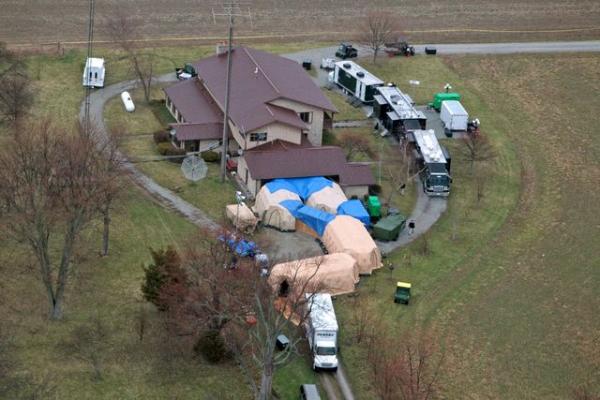
In this aerial photo taken from WTHR Chopper 13, FBI agents work around the home of 91-year-old Donald Miller in Waldron, Ind. on Wednesday, April 2, 2014. Authorities seized thousands of Native American, Russian, Chinese and other artifacts that have “immeasurable” cultural value from Miller’s private collection, the FBI said Wednesday. The items, which also came from Haiti, Australia, New Guinea and Peru, were collected by Miller over eight decades, FBI Special Agent Robert Jones said at a news conference.
Part One
The recent discovery by the FBI of a giant horde of Native artifacts and remains held by Don Miller in Rush County, Indiana offers an opportunity to take a deeper look into the eccentric, obsessive and sometimes shadowy world of such collecting.
Miller, 91, has been well known by as a collector of Indian and other artifacts for years. His collection includes the remains of over 100 Native ancestors, according to tribal leaders consulted by the FBI in the case. Many of the remains are labeled with names that can be traced to Native families alive today. “He had a head with an arrowhead stuck in it, like a skull and all kinds of Indian artifacts from arrowheads to hatchets to peace pipes to just anything,” neighbor Joe Runnebohm told the Indianapolis Star.
According to Drew Northern, FBI Supervisory Special Agent, the agency is reaching out to Tribal Historic Preservation Officers for assistance in repatriating items and remains found at Miller’s home. Within days of the find, the FBI coordinated a conference call and face-to-face meeting with THPO leaders at the Indianapolis office. “Building lasting relationships with tribes and repatriation is our goal,” Northern said.
Although early news reports described the FBI removal of the artifacts and remains from Miller’s home as a raid, later reports indicated that Miller is cooperating with authorities and had invited them into his home to take the items.

Although Agent Northern would not discuss how Miller came to the attention of the FBI, it seems likely that the collector may have been trying to sell or donate his artifacts. According to the Greensburg Daily News, Miller recently offered his collection to the Rush County Historical Society. Since the organization has limited space, leaders declined his offer.
Many of today’s natural history museums collections are based on donations from wealthy antiquarians wishing to leave personal legacies, says Christopher Moore, professor of Anthropology at the University of Indianpolis. “As colonial empires expanded in the 18th and 19th century, wealthy travelers would bring strange things back with them, often amassing huge collections that they displayed in their homes.”
This colonial practice continues today. Miller amassed his collection during 52 years of world travel as a missionary. He made no secret of his collection and frequently invited school groups and neighbors in to see his private museum, that included not only Native artifacts and remains but also cultural items from all over the world. A 1992 piece in the Indianapolis Star told the story of Miller and his personal museum.
Although some of the items in his collection may have been acquired illegally, no charges have been brought against Miller. Many of the artifacts were found by Miller during his travels, but he has so many items that it seems reasonable to assume he also bought or traded.
According to a Native artifacts dealer who asked to remain anonymous, Miller was a regular at artifact shows in the region.
Miller could not be reached for comment. Several prominent signs are currently posted along the property line of his Rush County home warning that trespassers will be prosecuted.
We may never learn complete details about Millers great horde and what drove him to amass it. His story, however, brings up tantalizing questions about those who are compelled to dig the earth in search of such treasures.
The subculture of artifact hunting, collecting, trading and selling spans an enormous spectrum from benign to bizarre, and involves a vast array of participants, from aging missionaries to meth heads.
Although the general public opinion regarding the legality and damage of digging for and collecting artifacts is slow to change, authorities are stepping up efforts to address this practice.
Bambi Kraus, President of the National Association of Tribal Historic Preservation Officers describes the FBI’s handling of the Miller case as a sea change for the agency. “This has never happened before that I know of, “ she said of the FBI’s decision to bring in tribes at the beginning of such an investigation.
“It was worth all those years of urging people to work with Indian tribes,” said Kraus.
Ben Barnes, second chief of the Shawnee tribe of Oklahoma, drove to Indianapolis to participate in the tribal consultation meeting with the FBI. He was impressed by agents’ displays of respect and concern especially regarding remains.
“The agents have been very active in making sure the ancestors are being taken care of; they are treating them respectfully and storing them in a special place away from other evidence.”
Past FBI investigations and seizures of Native artifacts have not ended as well such as the 2009 case in Utah.
One of those arrested during what then Interior Secretary Ken Salazar described as the biggest bust of Native artifact thieves, committed suicide. Residents of the region were outraged over what they described as heavy-handed tactics used by the FBI and the Bureau of Land Management, whose officers bust into suspects homes armed and wearing flak jackets.
Agent Northern did not respond directly to questions regarding the impact of the Utah case on the FBI’s handling of this case. “Our goal is to be as transparent,” he said, “mindful and respectful as possible and try to learn from what hasn’t gone well in the past.”
Read more at http://indiancountrytodaymedianetwork.com/2014/05/08/people-dirt-fbi-bust-remains-collector-hints-sensitivity-native-issues-154778?page=0%2C1
Amid Furor, Auction House Stops Sale of Bloody Native Child’s Tunic
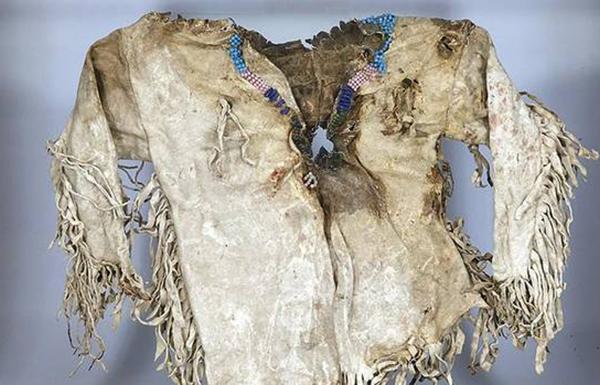
Lot 22 – ‘Northern Plains Indian Child’s Tunic, early 19th century fringed and with beaded collar, showing signs of central bullet trauma.’
Vincent Schilling, ICTMN
When the Toronto-based Waddington’s auction house held a pre-show viewing of items to be sold during its auction of the late William Jamieson’s collection, a blood-stained “Northern Plains Indian Child’s Tunic,” complete with a bullet hole, was among the items. An outpouring of anger ensued, and Waddington’s soon pulled the item from the listing.
Responding to the outcry, Waddington’s President Duncan McLean told the Globe and Mail, “We don’t want to upset anybody, so are withdrawing the item and returning it to the consignor.”
Though Waddington’s responded by removing the item to be auctioned, several more native artifacts were auctioned from April 29th to May 1st, including a Pair of Lakota moccasins said to have been owned by Sitting Bull, which sold for $9,000, a Sioux Saddle blanket and pouch, which sold for $3,120, an Iroquois False Face Society Mask, which sold for $2,640, and more.
The child’s tunic was of interest to Jamieson because the garment had a bullet hole in the center of the chest and visible blood stains. Jamieson was known in the rare-item collectors world as the “Master of the Macabre” — a label backed up by his collection of items on auction at Waddington’s. In addition to the Native artifacts, other items listed at Waddington’s included an electric chair, a bone model of a guillotine, a medieval wrought-iron ‘Shame’ mask and more.
The items on sale at Waddington’s also caused an outcry from First Nations communities in Canada. In particular, the Haudenosaunee Council forbids the sale or exhibition of medicine masks.
Hayden King, a member of Beausoleil First Nation who teaches history and native politics at Ryerson University, told the Globe and Mail, “I’m generally of the belief that they should be returned. Some government agencies and museums agree, but the market includes many players who do not.”
“It all reflects this apparently endemic belief that native people are extinct, so we can do whatever we want with their stuff,” said King.
Sean Quinn, Waddington’s decorative arts specialist who appraised the tunic to be worth $2,000 to $3,000 told the Globe and Mail, “It was very, very difficult for me to catalogue [the tunic], because of its relation to a terrible period of history, the death of any child is horrific.”
When Jamieson died in 2011, his fiancée Jessica Phillips took to selling his collection, which also included authentic shrunken heads and necklaces made of human teeth. Though she says she agrees the tunic is a piece of history, it is up to the executors to decide where it ends up.
Read more at http://indiancountrytodaymedianetwork.com/2014/05/07/amid-furor-auction-house-stops-sale-bloody-native-childs-tunic-154774
Quinault Tribe explores “moving” town of Taholah
by JOHN LANGELER / KING 5 News
TAHOLAH — About two months ago, Marco Black heard the Pacific Ocean knocking at his back door.
“I was in the house at the time,” recalled Black, “The whole house shook.”
The Taholah native was experiencing a severe storm at his waterfront home. One wave broke the seawall separating the town from the ocean, forcing the barrier to collapse and knocking his smokehouse off its foundation.
More urgent than Black’s smokehouse are all the homes within Taholah. The town sits in a tsunami zone, and parts of the main community flood three-to-four times a year.
Since the storm, the Army Corps of Engineers has repaired the 36-year-old wall, but called it “a band-aid”, and not a permanent solution.
In search of something long-term, the tribe is pushing for a new tactic, one that has been talked about for decades but may finally happen.
Moving the town to higher ground.
“I think it’s a foregone conclusion,” explained tribal secretary Larry Ralston, “Taholah’s moving up the hill.”
Ralston said land has already been chosen for a new town, and a three-year study to find ways to make the move happen is currently underway.
The main issue is tsunami danger, but the rising tide of the Pacific Ocean is also a major concern.
“It’s not going to be easy,” continued Ralston, “There’s going to be some people that will hold out. They’ll refuse to leave.”
The main part of Taholah includes around 1,700 residents, the school, police and fire departments, the mercantile, the post office and a retirement home.
It’s also the location of many of the most important pieces of the Quinault Tribe’s ancestry.
“All that will go away,” said Ralston, “It’ll be just a memory.”
Black, whose family has lived near the ocean for decades, admits he’ll lose his land to the ocean one day. It’s a realization made reluctantly, but with the knowledge there are few other choices.
“It’s kind of my home land,” he said, “We’ve lived here all our life. If we have to do it, I guess we’ll have to do it.”
It is unclear how much it will cost to move Taholah. Action by the tribe and federal agencies could be years away, Ralston said.
Feds Issue Emergency Order On Crude Oil Trains
Associated Press
WASHINGTON (AP) — The Transportation Department issued an emergency order Wednesday requiring that railroads inform state emergency management officials about the movement of large shipments of crude oil through their states and urged shippers not to use older model tanks cars that are easily ruptured in accidents, even at slow speeds.
The emergency order requires that each railroad operating trains containing more than 1 million gallons of crude oil — the equivalent of about 35 tank cars — from the booming Bakken region of North Dakota, Montana and parts of Canada provide information on the trains’ expected movement, including frequency and county-by-county routes, to the states they traverse. The order also requires that railroads disclose the volume of oil being transported and how emergency responders can contact “at least one responsible party” at the railroad.
Much of the oil from the region is being shipped across the U.S. and Canada in trains of 100 cars or more that accident investigators have described as “moving pipelines.” The trains traverse small towns and big cities alike. Local and state officials, fire chiefs and other emergency responders have complained that they often have no information on the contents of the freight trains moving through communities and their schedules. Nor are they able to force railroads to provide that information, they say.
The department also issued a safety advisory urging shippers to use the most protective type of tank car in their fleets when shipping oil from the Bakken region. The order recommended that to the extent possible shippers not use older model tank cars known as DOT-111s. Accident investigators report the cars have ruptured or punctured, spilling their contents, even in accidents that occurred at speeds under 30 mph.
The tank cars are generally owned by or leased to oil companies that ship the crude, not the railroads.
The emergency order follows a warning two weeks ago from outgoing National Transportation Safety Board Chairwoman Deborah Hersman that the department risks a “higher body count” as the result of fiery oil train accidents if it waits for new safety regulations to become final.
Transportation Secretary Anthony Foxx announced the moves at a Senate committee hearing Wednesday, saying the department was moving as fast as possible on new safety regulations for crude oil shipments. He said the department sent a proposal last week to the White House that included new tank-car standards and regulations on train speeds, and the safety classification of oil based on its volatility. He said he anticipated final regulations before the end of the year.
Unlike the emergency order, the safety advisory on tank cars is voluntary, noted Sen. Maria Cantwell, D-Wash. Pointing out that oil trains move through “every major city it in the Northwest … hitting every urban center in our state,” she pressed Foxx to move even faster on tougher tank-car standards that would have the force of law.
There have been nine oil train derailments in the U.S. and Canada since March of last year, many of them resulting in intense fires and sometimes the evacuation of nearby residents, according to the NTSB. The latest was last week, when a CSX train carrying Bakken crude derailed in downtown Lynchburg, Va., sending three tank cars into the James River and shooting flames and black smoke into the air. No one was injured, but the wreck prompted an evacuation of nearby buildings.
Concern about the safe transport of crude oil was heightened after a runaway oil train derailed and then exploded last July in the small town of Lac-Megantic in Canada, just across the border from Maine. More than 60 tank cars spilled more than 1.3 million gallons of oil. Forty-seven people were killed and 30 buildings destroyed in resulting inferno.
U.S. crude oil production is forecast to reach 8.5 million barrels a day by the end of this year, up from 5 million barrels a day in 2008. The increase is overwhelmingly due to the Bakken fracking boom. Fracking involves the fracturing of rock with pressurized liquid to free oil and natural gas unreachable through conventional drilling.
Railroad and oil industry officials had no immediate comment on the government’s action.
Services Planned for Billy Frank Jr.
Funeral services for Billy Frank Jr. will be held 10 a.m. Sunday, May 11 in the Squaxin Island Tribe’s event center at the Little Creek Casino Resort, 91 W State Route 108, Shelton.
He will be interred at the Chief Leschi Cemetery, 2249 Reservation Road, just north of the ballfields. A dinner will follow at the Squaxin Tribe’s event center.
A public viewing will be held on Saturday, May 10 from noon to 5 p.m. at Mills and Mills Funeral Home, 5725 Littlerock Road SW, Tumwater.
Donations are being accepted by the Northwest Indian Fisheries Commission for the Billy Frank Services Fund. Send donations to the NWIFC, 6730 Martin Way E., Olympia, Wash. 98516.
Donations can also be made to the Billy Frank Jr. Salmon Forever Fund in care of Salmon Defense, PO Box 7431, Olympia, Wash.
An online memorial to the life and legacy of Billy Frank Jr. is available at billyfrankjr.org
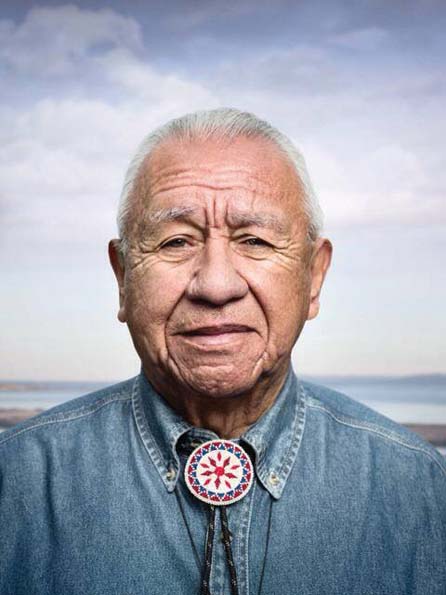
Report: Climate Change Likely To Reduce Hydropower In The Northwest
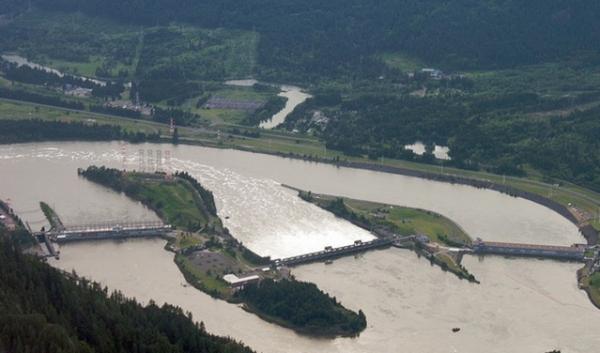
By Cassandra Profita, OPB
A national report released Tuesday says climate change will make it increasingly difficult for the Northwest to generate hydropower and protect salmon at the same time.
The Northwest gets 75 percent of its electricity from dams. As climate change reduces summer stream flows, the Northwest Climate Assessment report says the result will likely be less hydropower production from those dams – with reductions of up to 20 percent by 2080.
The reductions would be necessary to preserve stream flows for threatened and endangered fish, according to Amy Snover, director of the Climate Impacts Group and co-lead author of the Northwest report. Snover says with climate change leaving less water in rivers during the summer, what’s left will have to be divided between storage for hydropower and flows for fish.
“It will be increasingly difficult to meet the two goals of producing summer and fall hydropower and maintaining sufficient flows in the river for protected and endangered fish,” she said. “You can reduce some of the negative impacts on hydropower production but you can’t do that and maintain the fish flows.”
Snover says her report’s projections are based on the way the Northwest operates hydroelectric dams right now. But that could change. Regional power managers say climate change is leading them to reconsider how they will operate dams in the future.
John Fazio, an analyst with the Northwest Power and Conservation Council, says climate change is going to shift demand for electricity in the region, too.
Winters will be warmer, so people will need less power than before at a time of year when there’s lots of water in the rivers. And as summers get hotter, there will be more need for power to cool people off at a time of year when there’s less water available to generate hydropower.
Fazio has been thinking about the best way to manage the hydro system under these climate change scenarios. He’s suggested using other sources of power in the winter to make sure the system’s reservoirs are full of water by summertime.
“My suggestion would be during the summer we could pull more water from reservoirs to make up for decrease in summer flows and then going into the winter, use generation from other sources to meet our (power) loads and let the reservoirs refill,” he said.
Fazio’s ideas are outlined the council’s latest 20-year plan for meeting the region’s demand for power.
“It would call for a change in the whole approach to how we operate the hydro system,” Fazio said. “So far it hasn’t gotten any traction anywhere. It’s a complicated issue, but we’re trying to tackle it.”
Bonneville Power Administration, which manages 31 dams in the Columbia River Basin and distributes most of the electricity in the Northwest, has been pondering the issue of climate change as well. It’s developed a road map for adapting to climate change and launched pilot projects to model the effects of climate change on stream flows in the Columbia River Basin.
Arts & Tech students start gardens
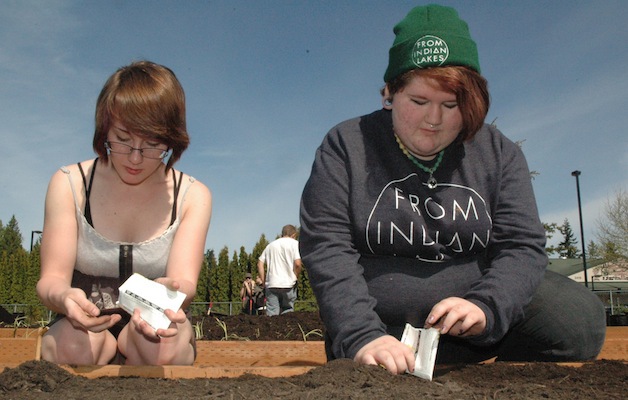
— image credit: Kirk Boxleitner
By Kirk Boxleitner, Marysville Globe
TULALIP — The unloading of a truck full of compost at the Marysville Arts & Technology High School on Wednesday, April 30, represented the culmination of a six-year dream for Arts & Tech math teacher Karen McCaffrey, and a unique opportunity for Arts & Tech students get dirty while growing their own food.
“Last year, we finally started a club devoted to growing local food,” McCaffrey said. “Not only is the process of gardening a valuable experience, but it teaches these kids how essential these foods are to their health and well-being.”
The Arts & Tech gardens benefitted from the fourth annual Compost Days campaign — jointly coordinated by Cedar Grove, Waste Management, King County and Seattle Public Utilities — which conducted its Big Garden Give, the region’s first compost drive, providing free compost to 120 gardens that grow food for low-income communities in Snohomish and King counties.
John Inge, marketing director for Cedar Grove, stopped by the school that Wednesday with Zsolt Pasztor, production manager of Farmer Frog, to watch the final truckload of compost get dumped next to the Arts & Tech gardens.
“Throughout Snohomish County, we’ve contributed 500 yards of compost to as many as 20 community gardens,” Inge said. “Yesterday, we dropped off about 10 yards, and today, we’re adding about 15 yards to the Arts & Tech school gardens. As much as we talk about the compost loop, it’s incredible to witness personally how the food and yard waste that we receive is now being used to grow fresh food, rather than going into landfills.”
Inge credited Washington State University with helping to connect Cedar Grove, and the other members of the Compost Days campaign, to community organizations, as well as assisting in coordinating their efforts.
“They’ve been invaluable in linking us to deserving recipients,” Inge said. “This way, we can provide support to gardens that serve all segments of the community.”
As the Arts & Tech students shoveled compost into wheelbarrows and poured it into the eight-foot by four-foot garden beds behind the school building, Pasztor explained the process that Farmer Frog facilitated beforehand.
“It started with the ground being covered with burlap, so that no light would reach the ground,” Pasztor said. “Wood chips were then laid down over the burlap, about four to six inches deep. We have a source of burlap and a connection with loggers to get the wood chips, which amounted to about 10 yards, covering a 20-foot by 30-foot area.”
From there, 16 garden beds were built over the wood chips, with pressure-treated lumber, of which eight were filled with the 10 yards of compost from Cedar Grove on Tuesday, April 29.
“We received 15 yards of compost today, which would probably fill 12 garden beds, but it’s better to have too much than not enough,” Pasztor said on April 30. “We also provided eight 10-gallon buckets with compost and strawberry plants. There’s a growing distance between people’s food and how it’s made, so we want to bring people closer to that food-making, so that they don’t just think of food as coming from Safeway or Albertsons.”
Pasztor also anticipates that Arts & Tech students will be able to apply their lessons in biology in a hands-on fashion in their gardens, perhaps even by doing experiments to see which factors cause plants to grow better.
The Arts & Tech students who volunteered to work the dirt and plant seeds on April 30 agree that they’re seeking closer connections, not only to the source of their food, but also to the community around them.
“I just like growing things,” said sophomore Emalee Alaniz, as she watered one of the garden beds. “It’s nice when you can grow your food more naturally.”
“I like that everyone here has come together as a team to make this happen,” said senior Nikki Cooley, who joined Alaniz in planting seeds in the compost. “I don’t usually get to work with all of these people, so I’m getting to know new people while I’m gardening, which is something I’m already experienced at. When you go to the store, you have to worry whether their fruits and vegetables have been treated with chemicals, but our fruits and vegetables will not only be locally grown, but they’ll be fresh, healthy and delicious.”
“It’s a healthier alternative,” agreed fellow senior Damon Diel Jr. “It also helps save money for the school.”
McCaffrey explained that the food grown in the Arts & Tech gardens would be prioritized, first to go to the students who helped grow it, then to go to community members in need who would be invited to take part in gardening there, with any remaining or leftover food likely going to community groups such as the Marysville Community Food Bank.
“This garden will be a source of ongoing joy for generations to come,” Marysville Arts and Technology High School Principal Terri Kaltenbach said.
The annual Compost Days campaign is a thank-you to area residents for diverting 350,000 tons of food, food soiled-paper and yard debris from landfills. From March 15 through April 15, residents received deep discounts on compost, and donated 30,200 bags of compost in turn, to help grow food in 120 gardens that feed communities.
“Making locally produced compost available to community gardens is an important first step in providing nutritious food for those that need it the most,” said Candy Castellanos, public education outreach manager for Waste Management. “Using compost is the most sustainable, environmentally supportive and efficient way to garden, and we are proud to play a role in growing gardens locally.”
For more information, visit www.compostdays.com.
Navajo Families Live With Electricity For First Time
Turning on the lights or opening the fridge are things many of us take for granted. But if you’ve never had electricity, they might seem like luxuries. Now, for dozens of families on the Navajo Nation, those luxuries are becoming a reality. As Arizona Public Radio’s Aaron Granillo reports, more than 60 families will soon have electricity for the first time in their lives.
Margie Tso has a beautiful view from her family ranch on the Navajo Nation, just southeast of Page.
“I have been living out here since 1952,” said Tso.
From her front yard, you can see miles and miles of red and orange sandstone. And LeChee Rock, a sacred mountain to the Navajo people. But from the backyard, there’s a clear view of the Navajo Generating Station, which has been supplying electricity all over the southwest since 1976. But not to Tso’s house.
“At times we kind of grumbled about it, but what could we do? I was brought up in the same matter that I learned to deal with,” said Tso. “Building a fire out of wood, using the charcoal for everything. Making bread, cooking meat, making stew, and such and such.”
But all of that has changed because of a nearly $5 million joint project that’s bringing electricity to certain areas of the Navajo Nation, including Tso’s ranch.
“It’s sort of a miracle for people to live like that,” said Tso. “Flip on a light. Get your remote. Your pleasure’s right there before you.”
Although the Navajo Generating Station has been producing electricity for decades, it’s not legally allowed to provide power to the Navajo Nation. That ownership and sovereignty belongs to the Navajo Tribal Utility Authority. But according to officials, they’ve never had enough money to build power poles in remote parts of the reservation. That is until now.
“The Navajo Generating Station and SRP donated about $2 million. NTUA donated some,” said Paul Begay, a business information technician with NGS.
Additional funding came from the Navajo Nation Abandoned Mine Lands program and the U.S. Department of Housing and Urban Development. By 2015, the project will bring electricity to 63 families.
“The first thing people mention is refrigerator. ‘Oh good, I’m not going to buy any more ice,'” Begay said.
Using ice to keep food fresh is what Pearl Begay did for decades. She lives just up the road from Tso’s ranch. Pearl only speaks native Navajo, so her daughter, Daisy, translates.
“She said she like her electric. The lights mostly, and her refrigerator.” said Daisy.
According to Daisy and Pearl, they should have had power a long time ago. They claim they were promised electricity nearly 40 years ago, while the Navajo Generating Station was being built.
“They built the plant right there, and they forget them,” said Daisy.
Their neighbor, Margie Tso, feels the same way.
“They started giving us hope, giving us hope,” said Tso. “And then they say, ‘It’s going to cost too much.’ And so then I just lost hope. I thought, ‘Well, whatever. I guess I won’t have electricity at the ranch.’”
But now that she does, life has become much easier.
“(It will) be quicker to do things than trying to hook up this and that, or run out of gas and run to town to get more gas,” said Tso. “A miracle happened that it came through.”











